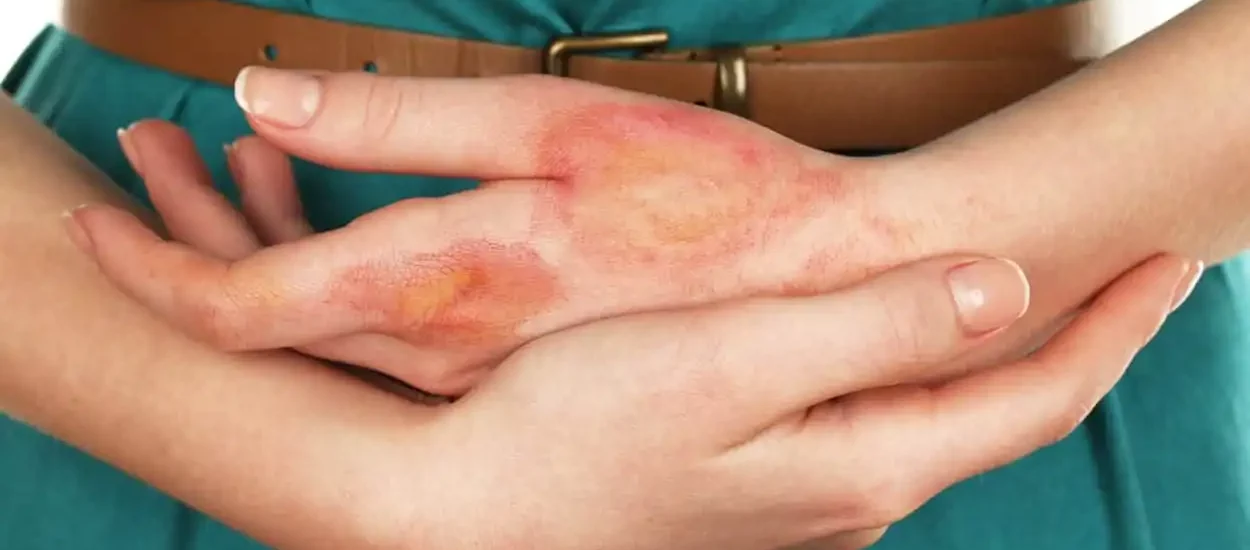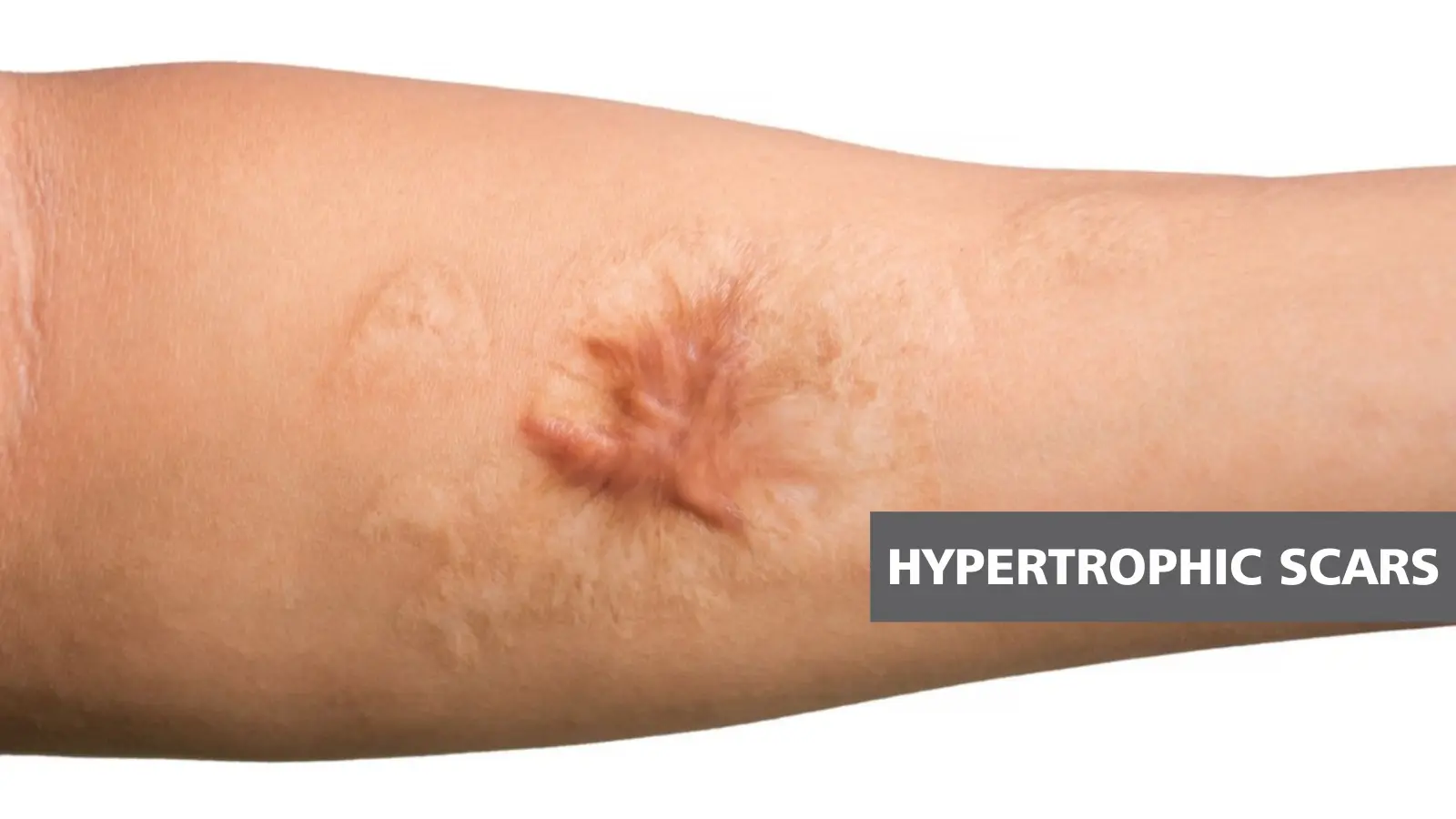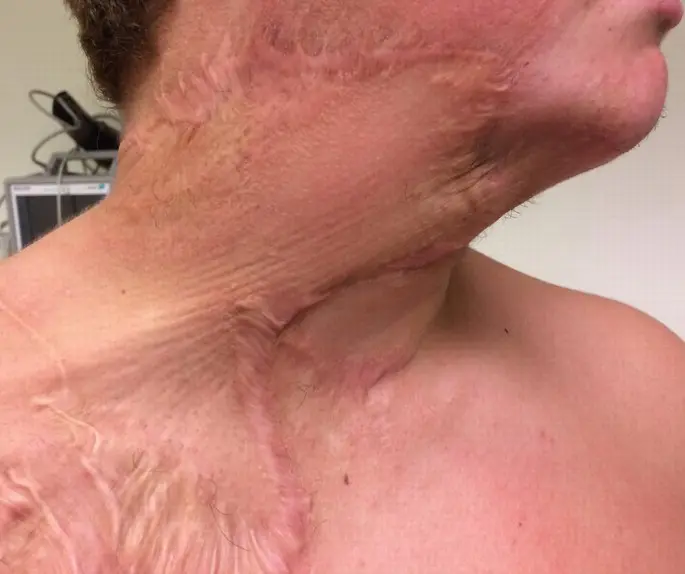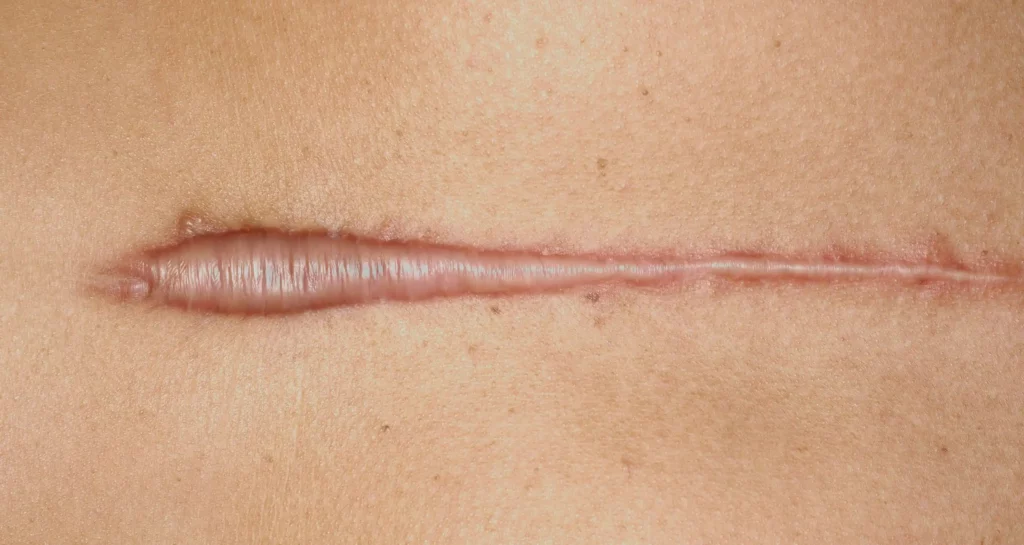


Burn scars are a visible reminder of a traumatic event that can have a lasting impact on both physical and emotional well-being. These scars are the result of burns, which occur when the skin is exposed to extreme heat, chemicals, electricity, or radiation. Burn scars can range from mild to severe, depending on the depth and extent of the burn injury. The physical impact of burn scars is multifaceted. Firstly, they can cause functional limitations and impair mobility. Depending on the location of the burn, scars can restrict movement and affect daily activities. For example, burn scars on joints or limbs can lead to stiffness and limited range of motion. Furthermore, burn scars can cause discomfort, itching, and pain, which can significantly reduce quality of life.
Beyond the physical challenges, burn scars can also have a profound emotional and psychological impact on people. Scars, especially those in visible areas such as the face, neck, or hands, can affect body image and self-esteem. The societal perception of scars as disfigurements may contribute to feelings of self-consciousness, social withdrawal, and decreased confidence. People with burn scars may experience anxiety, depression, and difficulty adjusting to their changed appearance, which can lead to a negative impact on overall mental well-being.
Hypertrophic scars are a common type of burn scar that occurs as a result of an overproduction of collagen during the healing process. These scars are characterized by raised, thickened, and red or pink tissue that remains within the boundaries of the original burn injury. Unlike keloid scars, hypertrophic scars do not extend beyond the boundaries of the wound.
The causes of hypertrophic scars are multifactorial and can vary depending on personal factors. One of the primary factors contributing to their development is the depth and severity of the burn injury. Deeper burns that penetrate multiple layers of the skin are more likely to result in hypertrophic scarring. Additionally, factors such as the size and location of the burn, delayed wound healing, infection, and genetics can also increase the risk of hypertrophic scar formation.

Hypertrophic scars often occur in areas where the skin is under tension, such as the joints, shoulders, chest, or back. These areas are prone to excessive scar tissue formation due to the continuous movement and stretching of the skin during the healing process. For example, burn scars on the knees or elbows can become hypertrophic due to the constant bending and stretching of these joints.
The physical characteristics of hypertrophic scars can vary from person to person. Initially, the scar tissue may appear red or pink and feel firm or raised to the touch. Over time, the color may fade, and the scar may become flatter, but it often remains thicker and more noticeable than the surrounding skin. Hypertrophic scars can cause itching, tenderness, and discomfort, and they may limit the range of motion in nearby joints if they become contracture scars.
Hypertrophic scars have the potential to improve and become less prominent over time, especially with appropriate treatment and scar management techniques.
Contracture scars are a specific type of burn scar that can have a significant impact on both mobility and functionality. These scars occur when the skin and underlying tissues shrink and tighten during the healing process, leading to a tightening or pulling effect on the surrounding structures. Contracture scars are characterized by tight, thick, and shiny skin that may appear darker than the surrounding healthy skin. They can restrict movement in the affected area, making it difficult to stretch or bend properly.
Contracture scars can occur due to loss of elasticity and flexibility in the burned skin during the healing process. When deep burns extend through the layers of the skin, including the dermis and subcutaneous tissue, the resulting scar tissue can cause the skin to become tight and rigid. This tightening effect is a natural part of the healing process, but in cases of severe burns or inadequate treatment, it can lead to functional limitations. Several risk factors increase the likelihood of developing contracture scars. Large burn injuries, especially those affecting a significant surface area of the body, are more prone to contracture formation.

The impact of contracture scars on mobility and functionality can be substantial. When contractures affect joints, they can restrict movement and make everyday activities challenging. For example, contracture scars on the hands may impair the ability to grasp objects or perform fine motor tasks. Facial contracture scars can limit mouth opening or eye movement, affecting facial expressions and even vision.
Timely and appropriate intervention is crucial in managing contracture scars. Treatment options may include physical therapy, range-of-motion exercises, splinting, or scar release surgery. Physical therapy and exercises aim to stretch and mobilize the scar tissue, maintaining or restoring range of motion.
Keloid scars are a distinct type of scar that can form after a burn injury. They are characterized by an overgrowth of scar tissue that extends beyond the boundaries of the original wound. Unlike hypertrophic scars, which remain within the confines of the injury, keloid scars can grow progressively larger and may continue to expand over time.
Keloid scars have specific characteristics that differentiate them from other types of scars. They are thick, raised, and often have a shiny, smooth appearance. The color of keloid scars can range from pink to dark brown and can be darker than the surrounding skin. Keloids can also be itchy, tender, and more prone to pain or irritation compared to other types of scars.

Keloids are believed to result from an abnormal response to skin injury, where the body produces an excess of collagen during the healing process. Certain people, particularly those with a family history of keloids, are genetically predisposed to developing these scars.
One significant difference between keloid scars and hypertrophic scars lies in their growth patterns. While hypertrophic scars typically remain within the boundaries of the original wound, keloid scars can extend beyond the initial injury site and invade the surrounding healthy skin. Keloids have a tendency to grow progressively larger over time and do not regress on their own.
Another notable distinction is the response to treatment. Keloid scars are generally more resistant to treatment compared to hypertrophic scars. They have a higher recurrence rate after surgical removal and may require a multimodal approach for effective management. Treatment options for keloid scars include corticosteroid injections, silicone gel sheets, cryotherapy, laser therapy, and surgical excision, often in combination with other interventions to minimize the risk of recurrence.
Thermal burns are the most common type of burn injury and can result from various sources, including fire, hot liquids, and steam. Understanding the causes of thermal burns is essential for prevention.
Fire-related thermal burns can occur due to household accidents, electrical malfunctions, or wildfires. Scalds, another common cause, happen when hot liquids or steam come into contact with the skin. Accidental spills, hot bathwater, or handling hot objects can lead to scald burns.
Taking preventive measures can significantly reduce the risk of thermal burns. Some key safety tips include:
Electrical burns result from contact with electrical currents, whether from household appliances, wiring, or lightning strikes. Understanding the causes and taking appropriate safety measures is crucial for preventing electrical burns.
Electrical burns can occur due to faulty electrical equipment, unsafe electrical practices, or accidental contact with power lines. In severe cases, lightning strikes can cause electrical burns.
To prevent electrical burns, it is important to follow safety guidelines:
Chemical burns result from contact with corrosive substances, including strong acids, alkalis, or certain cleaning agents. Understanding the causes and taking appropriate safety precautions can prevent chemical burns.
Chemical burns can occur in various settings, such as industrial workplaces, laboratories, or even at home. Accidental spills, improper handling of chemicals, or failure to use protective equipment can lead to chemical burns.
Safety measures are crucial to prevent chemical burns:
Topical treatments are commonly used in the management of burn scars. These treatments include various ointments, creams, and gels that can be applied directly to the scarred area.
Surgical interventions play a significant role in the treatment of burn scars, particularly for severe or functionally limiting scars.
Laser therapy is a non-invasive treatment option that can significantly improve the appearance of burn scars by targeting specific aspects of scar tissue.
The laser therapy also offers the advantage of precise targeting, minimal downtime, and the potential to achieve significant scar improvement. However, the number of laser sessions required and the results may vary depending on the scar’s characteristics and individual response.
Psychological Effects: Living with burn scars can have a profound psychological impact, evoking emotions such as sadness, anger, and anxiety. Body image issues and self-esteem challenges are common, affecting social interactions and overall well-being.
Support Systems: Professional counseling and therapy provide valuable assistance in coping with the psychological impact of burn scars. Support groups and peer communities offer understanding and a sense of belonging, fostering resilience and acceptance. Online platforms and social media communities also provide virtual support networks.
Burn scars have a significant impact on both the physical and emotional well-being of individuals. Understanding the different types of burn scars, their causes, and associated risks is crucial for effective treatment and prevention. Topical treatments, surgical interventions, and laser therapy offer options for scar management. However, it is essential to recognize the psychological effects of burn scars and provide emotional support. Professional counseling, support groups, and peer communities play a vital role in helping individuals cope with the emotional challenges and foster resilience. By addressing the physical and emotional aspects of burn scars, doctors can enhance the overall well-being and quality of life for individuals affected by these scars.
Itching of a burn scar is a common occurrence during the healing process. Several factors can contribute to this itching sensation. Firstly, as the scar tissue forms and matures, nerve endings can become more sensitive, leading to itching. Secondly, the skin’s natural healing process can result in dryness and tightness, which can trigger itching. In some cases, itching may also be a sign of scar tissue stretching or inadequate healing. It is important to avoid scratching the scar, as it can lead to further irritation or infection. Applying moisturizers, using gentle scar massage techniques, and consulting with a healthcare professional can help alleviate itching and address any underlying concerns.
Getting rid of laser burn scars requires professional intervention. Consult a dermatologist or medical professional specializing in scar treatment for personalized options. They may recommend topical treatments, such as silicone gels or creams, laser resurfacing, or surgical interventions like scar revision or skin grafting, to improve the appearance of the scars.
When it comes to treating burn scars, there are several options available. Silicone-based products, such as gels, sheets, or patches, can be applied directly to the scarred area to create a protective barrier and promote scar healing. We can use topical creams and ointments containing ingredients like corticosteroids, onion extract, or vitamin E to improve the appearance of burn scars. Additionally, pressure therapy, which involves wearing pressure garments or using compression bandages, can help flatten and soften the scars.
Effective treatments for burn scars include silicone-based products, topical creams, laser therapy, pressure garments, and surgical interventions. Silicone products promote healing and protection. Topical creams with corticosteroids or vitamin E improve scar texture. Laser therapy stimulates collagen production. Pressure garments flatten raised scars. Surgery, like scar revision or skin grafting, may be necessary.
To lighten a burn scar, several options can be considered. Topical treatments, such as creams, gels, or ointments containing ingredients like hydroquinone, kojic acid, or vitamin C, can help fade the scar’s appearance over time. Chemical peels or microdermabrasion, performed by a dermatologist, can exfoliate the scarred skin and promote new skin cell growth. Laser therapy or intense pulsed light (IPL) treatments can target pigmentation and stimulate collagen production for a lighter scar.
Treating second-degree burn scars involves several key steps. Keep the wound clean by gently washing it with mild soap and water, then applying an antibiotic ointment and covering it with a sterile dressing. Use topical treatments like silicone gels or creams to improve scar texture and appearance. Regular scar massage can help break down scar tissue. Protect the healing scar from sun exposure by applying a broad-spectrum sunscreen. Consider professional treatments such as laser therapy or chemical peels for more significant scars.
Tattooing over burn scars is possible in certain situations, but it can be challenging. The success and feasibility depend on factors like the location, texture, and severity of the scar, as well as the individual’s skin type and the skill of the tattoo artist. In some cases, the scar tissue may be too uneven or sensitive for a tattoo to be applied smoothly. It is crucial to consult with a professional tattoo artist who has experience working with scarred skin to assess the suitability and potential risks associated with tattooing over burn scars. They can provide personalized advice and recommendations based on your specific situation.
Burns have the potential to leave scars, especially more severe burns that penetrate deeper layers of the skin. Prompt and proper treatment, including wound care and interventions like surgery or skin grafting, can help minimize scarring.
Drawing realistic burn scars requires careful observation and attention to detail. Begin by researching reference images to understand the appearance and texture of burn scars. Sketch the outline of the scars, considering their size, shape, and placement. Use shading techniques and fine lines to create the texture and color of the scarred skin, gradually transitioning from healthy skin tones to reddish or darker shades. Consider whether the scars are raised or indented and adjust shading accordingly. Blend the scars with the surrounding skin for a natural look.
Getting rid of burn scars completely is challenging, but several treatments can help minimize their appearance. Silicone-based products, topical treatments with corticosteroids or vitamin E, and laser therapy can reduce the visibility of burn scars. Surgical interventions like scar revision or skin grafting may be necessary for severe cases. Dermabrasion or chemical peels can also improve the appearance of scars. Consulting with a healthcare professional or dermatologist is crucial to determine the most suitable treatment option based on the specific characteristics of your burn scars.
Fading burn scars naturally may take time and results can vary, but there are some natural remedies that may help. Applying fresh aloe vera gel, diluted lemon juice, virgin coconut oil, raw honey, or onion extract to the scars can potentially aid in scar fading. Staying hydrated and maintaining a healthy diet can also support overall skin health. However, it’s important to note that natural remedies may have limited effectiveness and may not completely eliminate the scars.
The burning sensation around a C-section scar can be attributed to a few factors. One possibility is nerve damage or irritation during the surgical procedure, which can cause abnormal sensations such as burning or tingling. Additionally, the healing process of the scar tissue can lead to nerve regeneration, resulting in temporary discomfort or sensitivity. It is essential to consult with your healthcare provider to evaluate the specific cause and discuss potential remedies or treatments to alleviate the burning sensation.
A burning sensation around a C-section scar can be caused by several factors. It is possible that the scar tissue is healing, and the nerve endings in the area are regenerating, leading to temporary discomfort or burning sensations. Additionally, if the scar becomes irritated or infected, it can cause a burning sensation. It is important to consult with your healthcare provider to determine the exact cause and receive appropriate treatment or advice to alleviate the burning sensation and ensure proper healing.